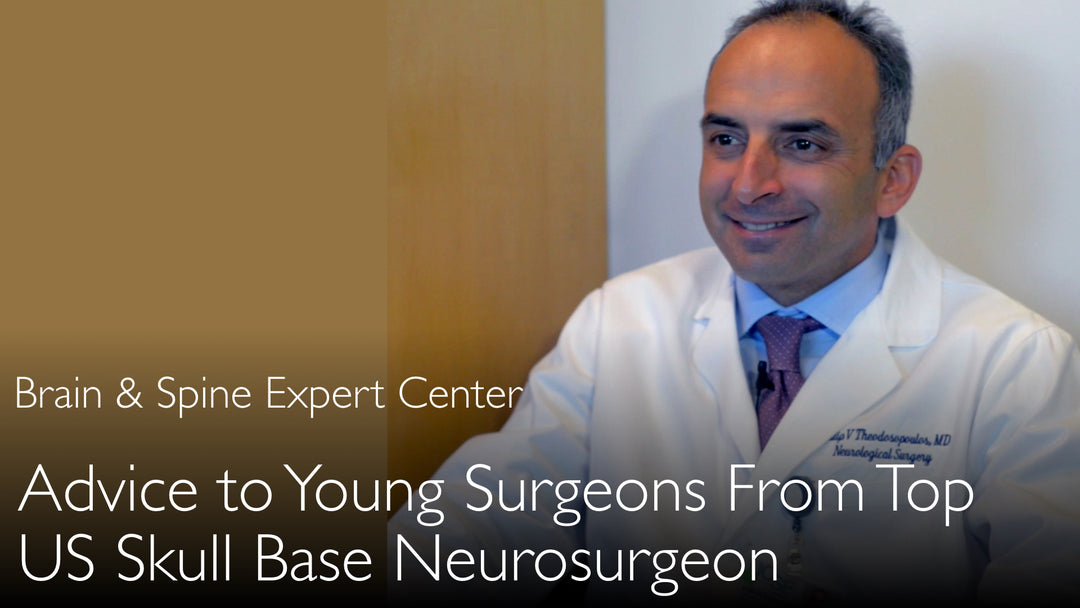Leading expert in aortic valve replacement, Dr. Anton Titov, MD, discusses the various surgical techniques and risk factors associated with aortic valve replacement. Dr. Jürgen Ennker, MD, emphasizes the importance of patient-specific factors, such as anatomical conditions and existing health issues, in determining the best surgical approach. The Medtronic Freestyle valve, a stentless option, offers significant advantages in terms of recovery and patient outcomes. Dr. Ennker also highlights the use of risk factor scores, like the euroSCORE and Parsonnet score, to assess surgical risks and guide decision-making for patients considering heart surgery.
Choosing the Optimal Aortic Valve Replacement Method
Jump To Section
- Understanding Aortic Valve Replacement
- Risk Factors in Aortic Valve Surgery
- Advantages of the Medtronic Freestyle Valve
- Patient-Prosthesis Mismatch Solutions
- Using Risk Scores for Surgical Decisions
- Full Transcript
Understanding Aortic Valve Replacement
Dr. Jürgen Ennker, MD, explains that aortic valve replacement is a critical procedure for patients with severe valve disease. The choice of surgical technique depends on the patient's specific anatomical and health conditions. Surgeons aim to replace the diseased valve with one that has a large valvular orifice to ensure optimal blood flow and recovery.
Risk Factors in Aortic Valve Surgery
Dr. Jürgen Ennker, MD, highlights that patient-specific factors, such as age, renal and pulmonary diseases, and previous heart conditions, significantly influence the risks associated with aortic valve surgery. Understanding these factors helps in tailoring the surgical approach to minimize risks and improve outcomes.
Advantages of the Medtronic Freestyle Valve
The Medtronic Freestyle valve, discussed by Dr. Jürgen Ennker, MD, is a stentless heart valve that offers a larger internal diameter and better recovery outcomes. Its design allows for use in aortic root replacement, particularly beneficial for patients with aortic root aneurysms, enhancing patient recovery and survival rates.
Patient-Prosthesis Mismatch Solutions
For patients with small annular diameters, Dr. Ennker recommends the Freestyle valve for its ability to accommodate aortic root enlargement. This approach reduces the risk of patient-prosthesis mismatch, leading to improved surgical outcomes compared to traditional stented valves.
Using Risk Scores for Surgical Decisions
Dr. Jürgen Ennker, MD, emphasizes the use of risk scores, such as the euroSCORE and Parsonnet score, to evaluate patient-specific risks before surgery. These scores help patients and surgeons make informed decisions about the feasibility and safety of undergoing aortic valve replacement surgery.
Full Transcript
Dr. Anton Titov, MD: Let's start our conversation with aortic valve replacements. Let’s discuss the risks of aortic valve replacement surgical operation. You have done thousands of aortic valve replacement surgeries. You used several techniques of aortic valve replacement. You also carefully match the patients to the best surgical technique. There are several aortic valve replacement methods. What are the risk factors for aortic valve replacement operation? How do you match patients with a method of surgical operation? How do you minimize surgical risks for the patient?
Dr. Jürgen Ennker, MD: Yes, it’s very important! The patient, of course, is the most important risk factor. The anatomical situation of the aortic valve is important for the surgeon to understand. Are there substantial calcifications of the heart valve? Is there only the aortic valve insufficiency? The aim is to replace the diseased valve with a valve with a very large valvular orifice.
Dr. Jürgen Ennker, MD: I found the Medtronic Freestyle aortic valve. It came on the market in 1994. Two years later, in 1996, I started to implant this aortic valve. This is a stentless heart valve. It is actually just a root of the pig valve. It has a heart valve surface treatment, so it's not antigenic. You don't need a stent. This saves you an internal diameter. A patient receives a Freestyle aortic valve. It has a larger internal diameter and a bigger intraannular space. This means less gradients and more rapid recovery of the diseased myocardium. Faster recovery of the patient after aortic valve implantation. So this is very important.
In addition to this, a unique feature of the Freestyle valve is that it comes as a total aortic root. So you can use it for a root replacement in patients with aortic root aneurysm. You can get rid of aortic root aneurysm by two techniques. The first one is total aortic root replacement. You resect the native aortic root of the patient. Then you have to implant again the coronary ostia. The other technique is the so-called aortic root inclusion. You implant the Freestyle heart valve inside the patient's aortic root. Of course, you have to re-implant the coronary ostia as well. So this is one indication.
Another indication for aortic stenosis heart surgery is this. The patient may suffer from patient-prosthesis mismatch. Patients who have a very small annular aortic valve surface (annular diameter) need an aortic root enlargement. Freestyle heart valve is excellent. It is adapted for this enlargement of the aortic root. Because you can cut into the noncoronary sinus. Then you can implant a larger Freestyle valve. It is better in comparison to a typical stented valve.
You can use a noncoronary sinus of the Freestyle valve as a replacement of the noncoronary sinus of the patient. Then you have enlargement by one of two grades larger than with typical normal stented heart valves. So this is a big advantage. Again, this contributes to better patient survival. Because the patient does much better after implantation of this heart valve in comparison to a routine stented aortic valve surgery.
Dr. Anton Titov, MD: Thank you for this very good review of the technologies to replace the aortic valve. You reviewed important heart valves that are used in aortic valve replacements. You have also identified a number of patient-side risk factors. They predict the risks of aortic valve replacement operations. In particular, the patient's age predicts the success of heart surgery. You also studied and published it extensively. What are the patient-side risk factors for aortic valve replacement surgical operation?
Dr. Jürgen Ennker, MD: For patient risk factors, we have risk factor scores. In Europe, we are using the euroSCORE. In the United States, you are using the Parsonnet score. There are several patient-related risk factor variables. This is age, renal disease, pulmonary disease, reoperation, the state of their heart as graded by the New York Heart Association, Class 2, 3, or 4.
Are there previous myocardial infarctions? You have a number of different variables. So you can calculate the risk score. I started working in Lahr clinic. We started to calculate the patients' risk factors for heart surgery. We are able to give a patient a risk score as a number. This score reflects a risk that the patient will have in our hospital. It is based on the experience of more than 15,000 cardiac operations. So everybody could make a decision about surgical operation. This decision is based on the patient's personal risk. It is due to the patient's personal risk factors. This is what we should tell our heart surgery patients. So that every patient can make an adequate decision whether to undergo heart surgery or not.







